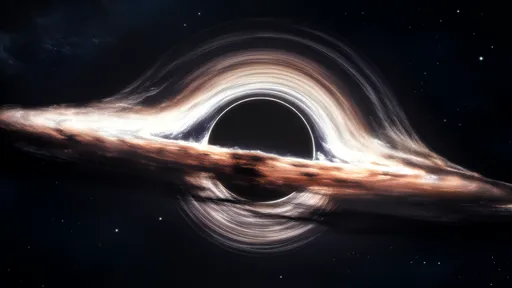For centuries, humanity has gazed at the sun with a mix of awe and trepidation. This celestial powerhouse, which sustains life on Earth, also harbors a volatile temper. Solar flares—sudden, intense bursts of radiation—are among the most dramatic manifestations of the sun's capricious nature. Scientists have long sought to predict these eruptions, and recent breakthroughs suggest we may be on the verge of a new era in space weather forecasting.
The sun's surface is a seething cauldron of plasma, threaded by magnetic fields that twist and tangle like invisible spaghetti. When these fields snap and reconfigure, they release staggering amounts of energy—equivalent to millions of hydrogen bombs detonating simultaneously. The largest flares can disrupt satellites, knock out power grids, and bathe astronauts in dangerous radiation. Understanding the precursor signals that precede such events has become a holy grail for solar physicists.
Decoding the Sun's Telltale Signs
At the forefront of this research are sophisticated monitoring systems that track subtle changes in the sun's magnetic architecture. The Solar Dynamics Observatory, a NASA satellite launched in 2010, captures high-resolution images of the sun every few seconds across multiple wavelengths. This torrent of data has revealed peculiar patterns in the sun's active regions—areas of intense magnetic activity where flares typically originate.
One promising clue involves the measurement of magnetic field gradients. Before major flares, scientists have observed a characteristic "shearing" motion where opposite magnetic polarities slide past each other. This creates a build-up of energy similar to winding up a jack-in-the-box. The tighter the twist, the greater the likelihood of an explosive release. Other precursors include sudden brightening in extreme ultraviolet wavelengths and distinctive patterns in the sun's surface oscillations.
The Forecasting Frontier
Several research groups are now developing algorithms that synthesize these warning signs into predictive models. At Stanford University, a team has created an artificial intelligence system that analyzes historical flare data to identify eruption patterns. Their model can issue warnings up to 24 hours in advance with about 70% accuracy—a significant improvement over previous methods. Meanwhile, European researchers are experimenting with helioseismology techniques, using sound waves to probe the sun's interior for clues about impending flares.
The challenges remain formidable. The sun's magnetic fields operate on scales ranging from kilometers to hundreds of thousands of kilometers, making comprehensive monitoring extraordinarily difficult. Moreover, the precise trigger mechanism for flares—the proverbial straw that breaks the camel's back—continues to elude scientists. Some theorize it involves microscopic instabilities in the plasma, while others point to large-scale magnetic reconnection events.
Practical Implications
Improved flare prediction would have profound consequences for our technology-dependent civilization. Satellite operators could temporarily put sensitive electronics into safe mode, airlines could reroute polar flights to avoid radiation exposure, and power grid operators could prepare for potential geomagnetic storms. The economic value of reliable space weather forecasts is estimated in the billions of dollars annually.
Perhaps most exciting is the prospect for fundamental discoveries about stellar behavior. Our sun serves as a nearby laboratory for understanding similar processes on other stars. Many exoplanet-hosting stars exhibit flare activity far more violent than our sun's—with direct implications for the potential habitability of their planetary systems. By cracking the code of solar flares, we may gain insights into one of astronomy's central questions: what makes a star suitable for life?
As monitoring networks expand and computational models grow more sophisticated, we edge closer to turning solar flare prediction from an art into a science. The dream of a reliable "solar flare clock"—counting down the hours or minutes until the next eruption—no longer seems like science fiction. In this endeavor, we're not just protecting our technology; we're fulfilling humanity's ancient quest to comprehend the fiery heart of our solar system.

By /Jul 31, 2025

By /Jul 31, 2025

By /Jul 31, 2025

By /Jul 31, 2025

By /Jul 31, 2025

By /Jul 31, 2025

By /Jul 31, 2025

By /Jul 31, 2025

By /Jul 31, 2025

By /Jul 31, 2025

By /Jul 31, 2025

By /Jul 31, 2025

By /Jul 31, 2025

By /Jul 31, 2025

By /Jul 31, 2025

By /Jul 31, 2025

By /Jul 31, 2025

By /Jul 31, 2025

By /Jul 31, 2025

By /Jul 31, 2025